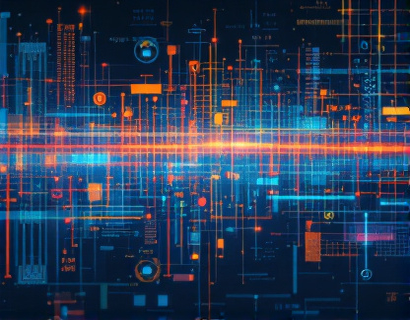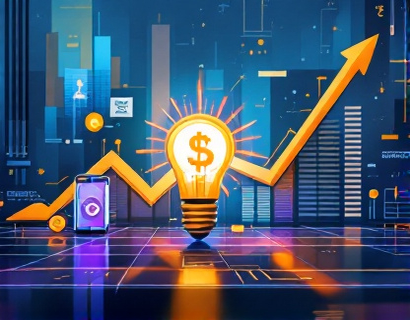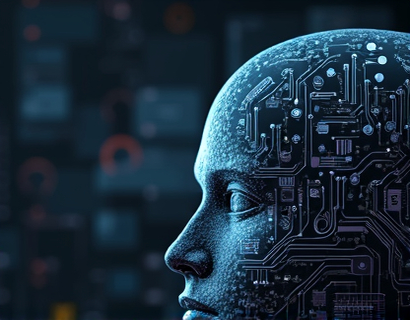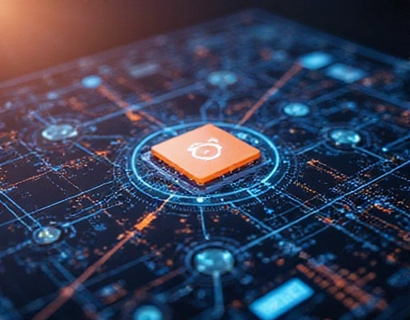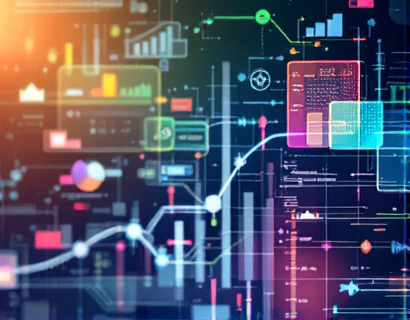Revolutionizing Digital Asset Management: A Deep Dive into Decentralized Cross-Blockchain Conversion
The landscape of blockchain technology is rapidly evolving, presenting both opportunities and challenges for professionals and enthusiasts alike. One of the most significant hurdles in the adoption and utility of digital assets is the complexity surrounding cross-blockchain conversions. Traditional methods often involve cumbersome processes, high transaction fees, and compatibility issues. However, a groundbreaking decentralized application (dApp) is changing the game by streamlining these conversions, ensuring seamless, efficient, and compatible transfers across diverse blockchains. This article delves into the intricacies of this innovative solution, designed specifically for blockchain professionals and digital asset managers seeking cutting-edge solutions.
Understanding the Need for Cross-Blockchain Conversion
The decentralized nature of blockchain technology means that different platforms operate on various protocols, each with its own set of rules and standards. This diversity is a strength, fostering innovation and competition, but it also creates fragmentation. Digital asset owners often find themselves needing to transfer assets between different blockchains, a process that can be fraught with challenges. Traditional methods of cross-blockchain conversion typically involve intermediaries, which can lead to delays, increased costs, and potential security risks. The need for a decentralized, user-friendly solution that simplifies this process is evident.
Introducing the Decentralized Solution
The proposed dApp is a pioneering platform that addresses these challenges head-on. By leveraging the power of decentralized networks, it eliminates the need for intermediaries, reducing transaction costs and enhancing security. This application is built on a robust blockchain infrastructure, ensuring transparency and immutability in all transactions. The core functionality of this dApp revolves around the seamless conversion of digital assets from one blockchain to another, without compromising on compatibility or efficiency.
Key Features of the Decentralized Conversion dApp
- Decentralized Architecture: The dApp operates on a decentralized network, removing the single point of failure and enhancing security. This architecture ensures that no single entity has control over the entire system, making it resilient to censorship and manipulation.
- Cross-Chain Compatibility: One of the standout features of this dApp is its ability to handle conversions across a wide range of blockchains, including but not limited to Ethereum, Binance Smart Chain, Polkadot, and Solana. This broad compatibility ensures that users can manage their assets across different ecosystems without the hassle of multiple platforms.
- User-Friendly Interface: Despite its complex underlying technology, the dApp boasts an intuitive and user-friendly interface. Blockchain professionals and digital asset managers can navigate the platform with ease, performing conversions with minimal effort and maximum efficiency.
- Real-Time Tracking: Users can monitor the status of their conversions in real-time, receiving instant notifications for each stage of the process. This transparency builds trust and provides peace of mind, knowing that their assets are being handled securely and efficiently.
- Cost-Effective Transactions: By eliminating intermediaries, the dApp significantly reduces transaction fees. This cost-saving feature makes cross-blockchain transfers more accessible, especially for smaller transactions that might otherwise be prohibitively expensive.
Technical Underpinnings of the dApp
The success of this decentralized conversion platform hinges on its technical architecture. At its core, the dApp utilizes a combination of smart contracts and cross-chain bridges to facilitate asset transfers. Smart contracts are self-executing contracts with the terms of the agreement directly written into code. These contracts automate the conversion process, ensuring that each step is executed precisely and securely. Cross-chain bridges, on the other hand, enable the transfer of assets between different blockchains, maintaining the integrity and ownership of the digital assets throughout the process.
The dApp also incorporates advanced cryptographic techniques to ensure the security and authenticity of transactions. Each conversion is verified through a consensus mechanism, adding an extra layer of security and preventing fraudulent activities. The use of zero-knowledge proofs further enhances privacy, allowing users to confirm the validity of transactions without revealing sensitive information.
Interoperability and Standardization
Interoperability is a critical aspect of the dApp, ensuring that assets can be seamlessly transferred between different blockchain ecosystems. To achieve this, the platform adheres to industry standards and protocols, such as Atomic Swaps and Cross-Chain Atomic Transfers (CCAT). These standards facilitate smooth and secure asset transfers, minimizing the risk of errors and ensuring compatibility across various blockchains. The dApp's support for multiple blockchain protocols also means that it can adapt to the evolving landscape, integrating new blockchains as they emerge.
Use Cases and Benefits
The applications of this decentralized conversion dApp are vast and varied, offering significant benefits to blockchain professionals and digital asset managers. Here are some key use cases and the advantages they bring:
1. Portfolio Diversification
Digital asset managers can use the dApp to diversify their clients' portfolios across multiple blockchains. This diversification strategy can help mitigate risks and potentially increase returns by leveraging the unique features and opportunities of different platforms. The seamless conversion process makes it easy to add or remove assets from various blockchains, providing flexibility and agility in portfolio management.
2. Cross-Chain Trading
Traders can benefit greatly from the dApp's cross-chain conversion capabilities. By enabling instant and cost-effective transfers between blockchains, the platform facilitates cross-chain trading, opening up new markets and opportunities. This feature is particularly valuable for traders who want to take advantage of price discrepancies or liquidity pools across different ecosystems.
3. Decentralized Finance (DeFi)
The DeFi space stands to gain immensely from this dApp. Users can move their assets between various DeFi protocols without the hassle of multiple conversions. This streamlined process enhances user experience and encourages greater adoption of DeFi applications. For developers and project creators, the dApp provides a robust tool for building and deploying cross-chain DeFi solutions.
4. Yield Farming and Liquidity Providing
Yield farming and liquidity providing are popular strategies in the DeFi space, but they often require assets to be moved between different blockchains. The dApp simplifies this process, allowing users to farm yields or provide liquidity across multiple platforms without the need for manual conversions. This efficiency can lead to higher returns and reduced friction in these activities.
Challenges and Future Developments
While the dApp offers numerous advantages, it is not without its challenges. One of the primary challenges is the ongoing development and maintenance of cross-chain bridges and protocols. The blockchain landscape is dynamic, and ensuring compatibility with new blockchains requires continuous effort. However, the decentralized nature of the dApp means that the community can contribute to these developments, fostering a collaborative environment for improvement.
Another area of focus is scalability. As the number of users and transactions grows, the platform must scale efficiently to handle the increased load. Implementing layer 2 solutions and optimizing smart contract performance are key strategies to address this challenge. Additionally, enhancing user education and support will be crucial in driving adoption and ensuring that users can fully leverage the platform's capabilities.
Future Enhancements
Looking ahead, the dApp plans to introduce several enhancements to further improve its functionality and user experience. These include:
- Enhanced User Onboarding: Simplifying the onboarding process to make the platform more accessible to new users.
- Advanced Analytics: Providing users with detailed analytics and insights into their asset performance across different blockchains.
- Integration with Non-Fungible Tokens (NFTs): Expanding support to include NFTs, enabling seamless transfers and management of digital art and collectibles.
- Community Governance: Implementing a governance model that allows users to participate in decision-making processes, ensuring the platform evolves in line with community needs.
Conclusion
The introduction of this decentralized conversion dApp marks a significant milestone in the evolution of blockchain technology and digital asset management. By streamlining cross-blockchain conversions, it addresses a critical pain point for professionals and enthusiasts alike. The platform's decentralized architecture, cross-chain compatibility, user-friendly interface, real-time tracking, and cost-effective transactions make it an indispensable tool in the modern blockchain ecosystem. As the technology continues to mature, the dApp will play a pivotal role in shaping the future of digital asset management, fostering greater adoption and innovation across the blockchain landscape.




